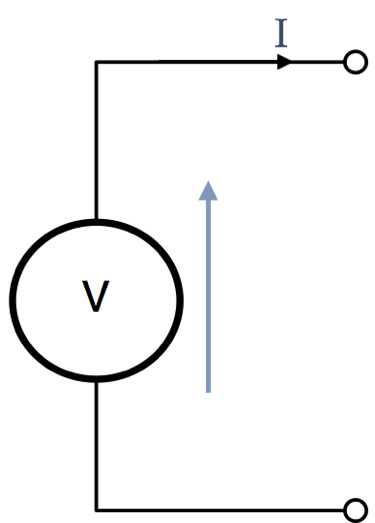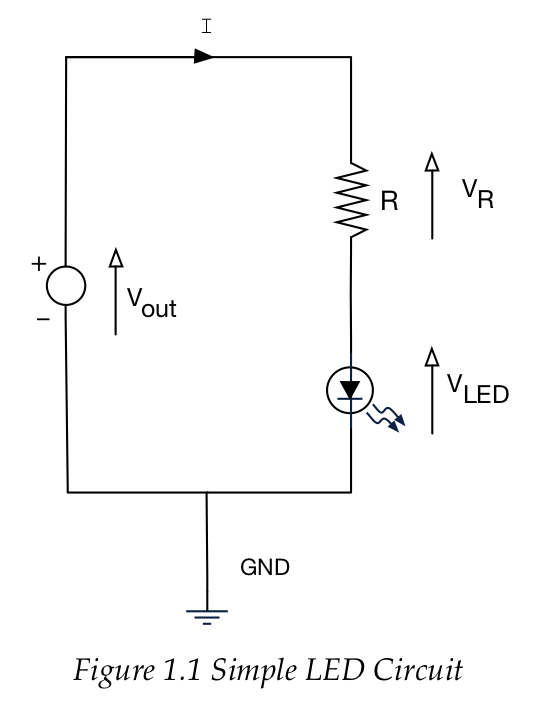A theoretical concept used for modeling real electronic circuits. The voltage across a constant voltage source (CVS) is fixed, irrespective of how much current I is drawn from it. It is the perfect power supply. It makes no sense to short-circuit a CVS as this would create a paradox.

Real voltage sources are modeled in conjunction with other components. For example, in the figure below we model a real voltage source with a resistor and a CVS:

R is known as “internal resistance” – this might represent the resistance of internal wiring of a power supply or chemistry of a battery. You cannot access or change this as it’s a physical characteristic of the power source.
Vout is the actual voltage presented to other parts of the circuit. We want this to be as close to V as possible.
When a current I flows, an internal voltage is dropped across R. Therefore:
![]()
or
![]()
As the current ![]() increases, so
increases, so ![]() further reduces. Therefore, circuit and power supply designers try to make R as small as possible.
further reduces. Therefore, circuit and power supply designers try to make R as small as possible.
In the limit:
- when you short-circuit this voltage source,
 and
and 
- when you leave the circuit open circuit, no current flows
 , so
, so 
If you have ever monitored a car battery voltage before and after the engine is started, this is why the voltage across the battery changes to much.
Some digital circuits draw such small currents, that we often don’t need to be overly concerned with internal resistance. Other parasitic effects become of greater concern, especially with high speed digital circuits.
